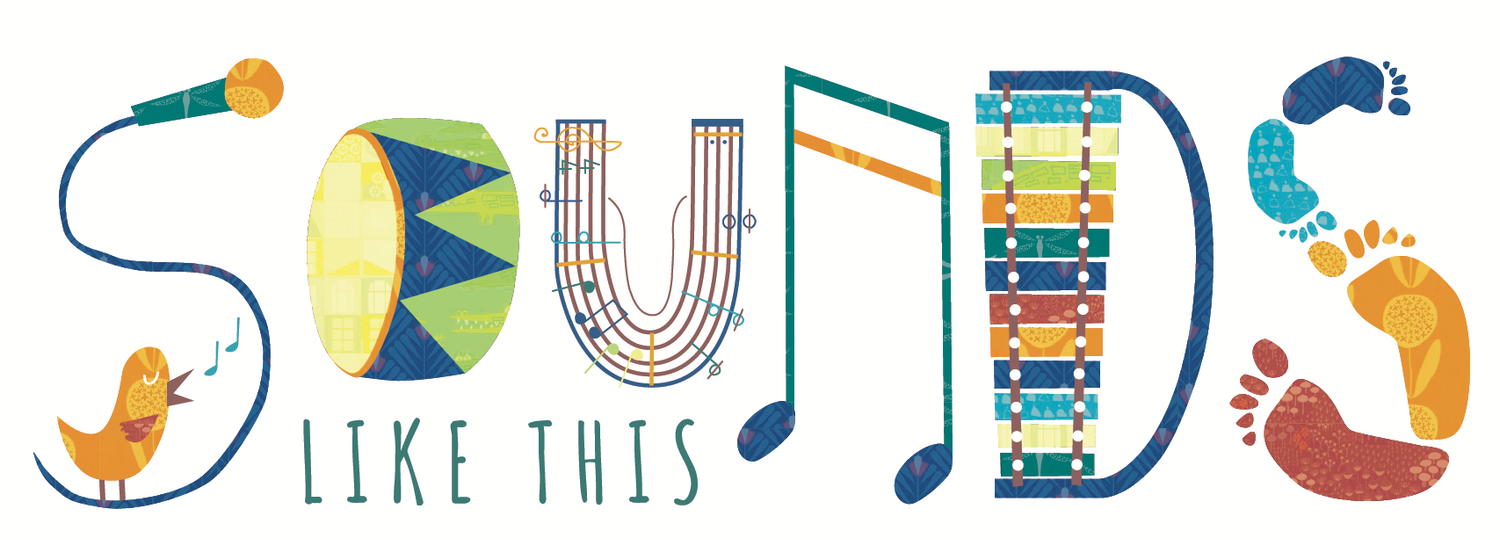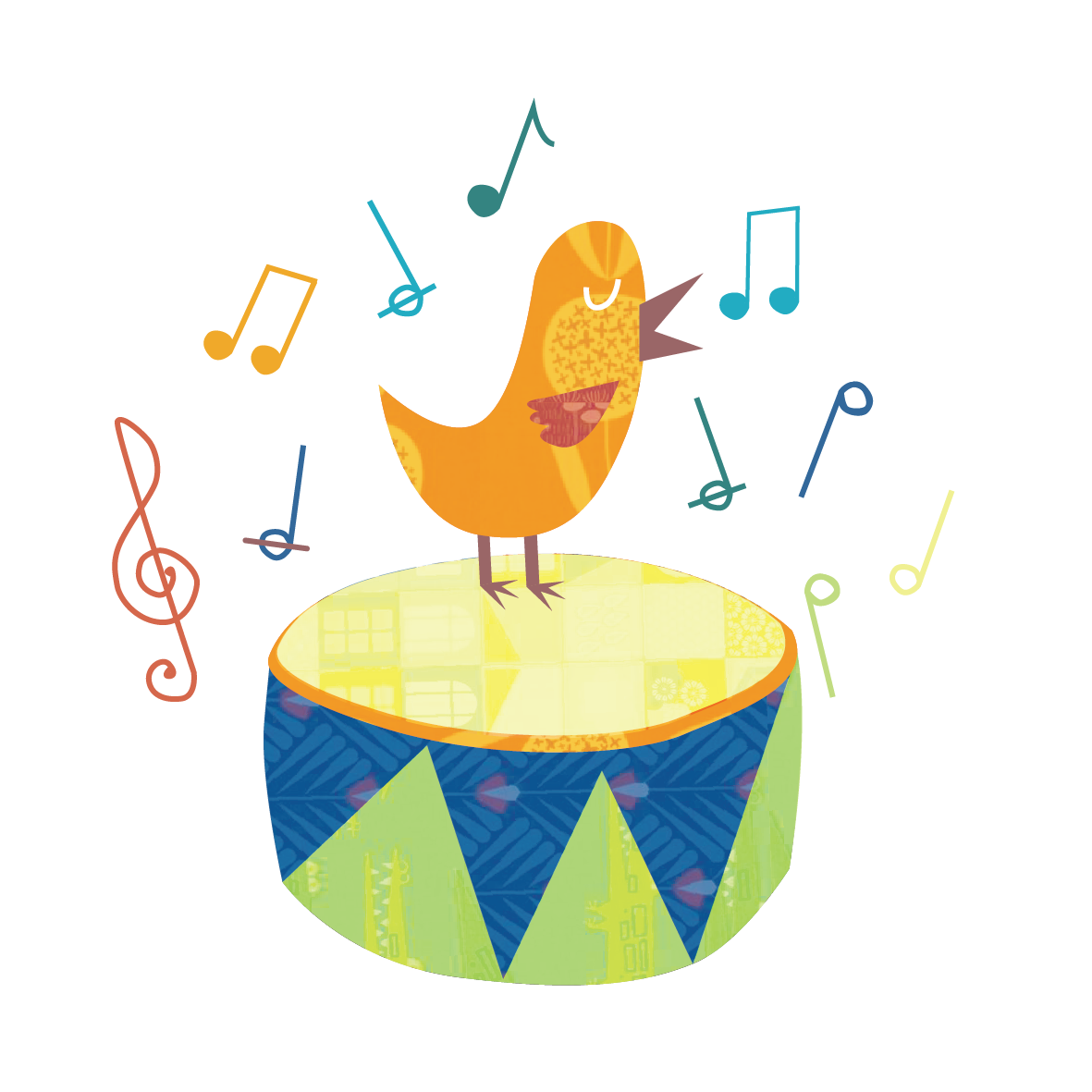The Milestones of Musical Development in Early Childhood
Most infants and youngsters start showing certain musical milestones as their young minds change and grow. Though it depends entirely on the child, research shows most children go through natural stages of music development in their early childhood.
Understanding how your little ones will steadily grow to understand music — and along with that, the world around them — can help you nurture and encourage their learning.
Are there appropriate goals for music in early childhood?
At Sounds Like This, we don’t believe there’s one specific path to musical development. Your children will hit their milestones when they’re ready.
The age estimates we’ve included below are based on studies of common early childhood musical development stages. But the most important thing is to trust where they’re at and follow their lead.
Musical development in babies from 0-12 months
A little one’s first interactions with music and sound will be through the environment around them, including the ambient noise, lullabies, and your voice.
You might notice them reacting to loud sounds or turning to the source of a sound. They may start to show joy at certain rhythms — especially when you’re singing to them. At a certain point, they might start experimenting with their first instrument (their VOICE!) through babbling.
Children begin to feel and understand beat and rhythm from an early age, first with your help moving their bodies along to the beat and playing body touch songs.
As their body awareness grows, they often bounce and jump to music all on their own or experiment with clapping or gestures.
This is when they might also start becoming curious about music-making materials like rattles, bells, and percussions. They may even mimic music-making after you’ve shown them what to do.
Musical activities you can do with a baby:
Move their bodies to song through tickling, bouncing, or wiggling. For example, sing This Little Piggy Went to Market while wiggling each toe in turn.
Stroke, rock, and pat them to music.
Give them bells and rattles to move and shake.
Clap, tap, or hit an instrument with a beat and encourage your child to mimic the behaviour.
Don’t have any “instruments”? No problem! An instrument to a young mind is anything that makes an interesting noise. A tissue box, a mixing bowl, or even the highchair tray table make fabulous instant drums.
Musical development in infants aged 1-2 years
They’re starting to develop their own tastes, personality, and understanding of music. Once they’ve found their feet, your children might start getting bolder, exploring their surroundings and showing more creativity in imaginative, child-led play.
As your little love is starting to build body and cognitive awareness, strengthen muscles, and gain confidence in gross motor skills, music-making becomes an active part of your toddlers’ lives.
Your little bubs might start responding to familiar tunes. They could even have their favourite songs and beg to hear them “again, again!”
They might start responding to music more physically, clapping to a steady beat, responding to sound and silence games, or even performing rhythmic movements — the beginnings of dance!
This is a wonderful age where children are at the early stages of imaginative play yet haven’t developed too many inhibitions.
Children might start making up lyrics to their favourite songs — or making up songs altogether. They might also sing randomly or repeat the same fragments of songs.
Musical activities you can do with an infant and toddler:
Help them feel the beat in their bodies by bouncing them up and down on a knee or lap to the beat of a song.
Give them pull-along rattles so they can continue developing gross motor skills.
Give them a range of random instruments and allow them to let loose.
Sing them lullabies.
Encourage finger play to a song like Incy Wincy Spider or 5 Little Ducks.
Musical milestones in children aged 3 and 4 years old
Now that your children are steady and confident on their feet, their bold explorations might extend to their musical development. They may prefer starting songs on their own pitch and exploring musical sounds with anything at hand.
They might move spontaneously to music without someone to imitate, finding their own dancing style. And they might even bring objects into their dancing and music-making routines.
Growing young minds start to understand music better. At four years old, they may start singing more complicated songs (within the D-A range), participating in more complicated games, and stepping to the beat. Your little ones might even have started reproducing their favourite songs in full.
Music activities you can do with a child
Give them anything they can play and experiment with — whistles, pots and pans, pat bells, xylophones… whatever safe materials can make a noise!
Echo back their movements and ideas. Copy them to encourage further imaginative play. Let them lead and don’t be afraid to let your guard down and get silly.
Musical development in preschool children, aged 4-5 years old
As your children grow older, they’ll start identifying more parts of sound and music and understanding the parts of music better.
For example, a child of about 4 or 5 might be able to notice the difference between high and low or fast and slow sounds. Their beat timing improves and they can learn to step and even dance to a beat.
They might be able to play simple instruments — and perhaps even improvise on them! They can also repeat the same sounds and patterns, whether through singing or an instrument.
What you can do:
Trust in and encourage child-led musical explorations.
Create action songs to encourage their imagination.
Sing — try making up silly songs with them. Use lots of known words and play with rhyming real and nonsense words.
Need some inspiration for child-led songs?
Music can help cherish and nurture early childhood development, promoting a sense of curiosity, risk-taking, play, and creativity.
Embrace more active music-making with your children with our membership for Children’s Online Music Sessions. It’s a monthly subscription that gives you access to a HUGE educational online music-making video library, packed with sessions for your children.













